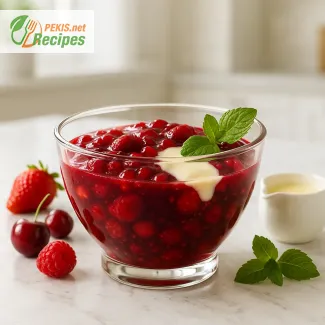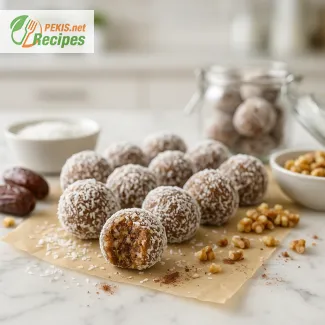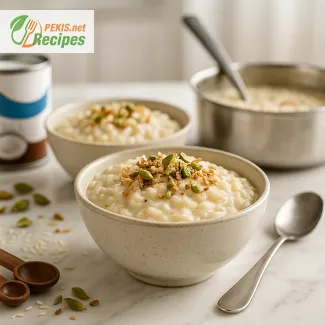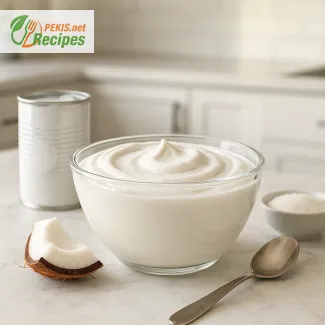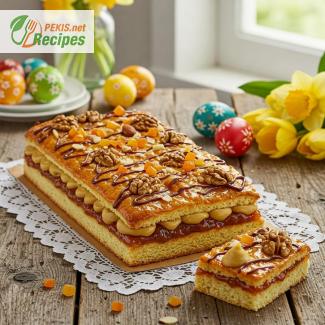
Discover the Traditional Polish Delight: Sweet Mazurek Cake for Easter Celebrations
A cherished Polish dessert with a rich heritage and irresistible flavor
The Mazurek cake, or Mazurek wielkanocny, is a visually stunning and richly flavored Polish Easter dessert that has been at the heart of festive tables for centuries. Known for its flat shape, buttery shortcrust base, and an array of sweet toppings, Mazurek is more than just a cake—it's a symbol of Polish culinary artistry and a joyful expression of the Easter spirit.
Unlike typical layered or frosted cakes, Mazurek boasts a thin, crisp base that supports a luscious layer of fruit preserves, dulce de leche, or chocolate ganache, all topped with nuts, candied fruit, and elaborate decorations. What truly sets this dessert apart is the care and creativity that goes into its presentation, making it not only delicious but also a feast for the eyes. With its bright, festive appearance, it captures the joy of spring and the renewal that Easter represents.
Mazurek is traditionally prepared during Holy Week, just before Easter Sunday. Every Polish household adds its own unique touch, but the essence remains the same: a celebration of sweetness after the solemnity of Lent. Some families pass down their family Mazurek recipe through generations, with regional variations that reflect local ingredients and tastes. From Warsaw to Kraków, this cake continues to bring loved ones together and create lasting holiday memories.
The base of Mazurek is typically made from shortcrust pastry, sometimes enriched with ground almonds or hazelnuts for added texture and depth. A second layer of dough may be placed around the edges to form a decorative border, often braided or fluted. Once baked to a golden hue, the crust is filled with vibrant fruit jams, caramel, or even poppy seed paste—each lending its unique character and sweetness to the cake.
But it’s the topping that transforms Mazurek into an edible work of art. From glazed apricots and almonds arranged in floral patterns to intricate icing motifs and chocolate drizzles, this cake invites creativity. Easter-themed decorations, like sugar bunnies, chicks, or flowers, are often used to highlight the festive occasion.
Preparing a Mazurek cake is not just about baking—it's about celebrating heritage, tradition, and togetherness. It’s the moment in the kitchen when grandmothers, parents, and children gather to shape dough, choose fillings, and meticulously decorate the surface. It’s the centerpiece of the Easter table, proudly displayed among painted eggs, sausages, and festive breads.
In recent years, this once-local delicacy has gained international interest. Home bakers around the world are discovering Mazurek's charm, drawn by its balance of crisp pastry and rich toppings, its relatively simple preparation, and its dazzling appearance. Whether you're Polish by heritage or simply an admirer of global cuisine, making a Mazurek cake is a wonderful way to explore Eastern European Easter traditions.
If you're searching for a dessert that combines beautiful presentation, deep-rooted tradition, and delicious flavor, look no further than the Polish Easter Mazurek. It’s the perfect sweet note to end a festive meal—and a meaningful way to connect with the heart of Polish Easter customs.
What makes Mazurek a must-bake Easter dessert?
Mazurek is more than just a cake—it's a canvas for flavor and artistry. Its versatility means it can be customized to suit all preferences, from those who love tart fruits like apricot or plum, to those who prefer indulgent options like toffee and chocolate. The contrast between the crisp base and the silky-sweet filling is what gives Mazurek its unmistakable character.
Whether you're baking it for the first time or reliving a treasured family tradition, this cake captures the essence of Easter joy in every bite.
1. Make the dough:
In a large bowl, combine the all-purpose flour, powdered sugar, and salt. Add cold, cubed butter and rub it into the dry ingredients with your fingers or a pastry cutter until the mixture resembles coarse crumbs. Add the egg yolks and knead gently until a smooth dough forms. Shape the dough into a disk, wrap it in plastic wrap, and refrigerate for 30 minutes.
2. Preheat the oven:
Preheat your oven to 180°C (350°F). Line a rectangular baking tray (approx. 25x30 cm / 10x12 in) with parchment paper.
3. Roll out the dough:
On a floured surface, roll out the dough to fit your baking tray. Press the dough into the tray and shape a decorative edge if desired. Use a fork to prick the base all over to prevent bubbling.
4. Bake the crust:
Bake the crust for 20 minutes or until lightly golden. Remove from the oven and allow to cool completely.
5. Assemble the Mazurek:
Once cooled, spread the plum jam or apricot jam over the entire base. Then layer the dulce de leche evenly on top of the jam.
6. Decorate:
Melt the dark chocolate and drizzle it over the cake in thin lines or creative shapes. Sprinkle with chopped walnuts, sliced almonds, and candied orange peel. Use extra jam or chocolate to draw festive Easter motifs if desired. Let the chocolate set before slicing.
7. Serve:
Cut the Mazurek into 12 squares or slices and serve at room temperature.
Creative Ways to Elevate Your Homemade Mazurek Cake
Tips and ingredient tweaks to refine this beloved Polish Easter treat
The Polish Mazurek cake is a beautiful blend of tradition and indulgence, but like any beloved classic, it offers room for enhancement and personalization. With a few thoughtful ingredient choices, subtle changes in preparation, and an understanding of the most common mistakes, you can create a Mazurek that not only honors the original recipe but also reflects your own culinary style and dietary preferences.
Choose quality ingredients for the best results
When a recipe is as simple as Mazurek, the quality of ingredients makes all the difference. Using European-style butter, which has a higher fat content than standard butter, leads to a more tender and flavorful crust. Selecting organic eggs and natural preserves without added sugars or artificial flavors will also significantly elevate the final result.
For the filling, many traditional recipes call for store-bought jams or caramel, but preparing these components at home opens a world of flavor. A homemade apricot jam, for example, can be adjusted in sweetness and texture to better complement the crust. Similarly, a freshly made dulce de leche using high-quality condensed milk provides a smoother, creamier layer with deeper caramel notes.
Ingredient swaps that enhance flavor and texture
You can enrich the Mazurek crust by adding ground nuts directly into the shortcrust dough. Replacing 50 g of flour with ground almonds or hazelnuts adds a nutty aroma and a slightly softer bite. Adding a pinch of cinnamon or orange zest to the dough also introduces subtle warmth and brightness, enhancing the overall depth of flavor.
The filling can also benefit from modern adaptations. Try layering dark chocolate ganache under a thin coat of jam for added richness. Alternatively, blend the dulce de leche with a few tablespoons of espresso or liqueur, such as Amaretto or Cointreau, for a more complex and mature taste.
Toppings are a chance to get creative. While traditional Mazurek often features walnuts and candied peel, consider using roasted pistachios, freeze-dried berries, or edible flowers for a modern, elegant finish. These additions not only diversify the texture but also enhance the visual appeal.
Healthier adaptations without compromising taste
Although Mazurek is known for its indulgence, there are several ways to make it healthier without losing its essence. Replacing refined white flour with whole wheat pastry flour retains a light texture while increasing fiber. You can also opt for natural sweeteners, such as honey or maple syrup, in homemade fillings to reduce processed sugar intake.
For a lighter version of the crust, replace some of the butter with Greek yogurt or mashed avocado. These alternatives maintain moisture while lowering saturated fat. Additionally, using sugar-free or low-sugar jam allows you to control sweetness more effectively, especially if you’re pairing it with a rich topping like chocolate or caramel.
Common mistakes and how to avoid them
Despite its simplicity, there are pitfalls to watch out for when making Mazurek. One frequent mistake is overworking the dough, which leads to a tough crust. To prevent this, handle the dough gently and chill it properly before baking. Another issue is underbaking or overbaking the crust. The goal is a lightly golden surface—bake just until set and avoid letting the edges brown too much.
Another common misstep is using too much filling, which can cause sogginess or an overpoweringly sweet flavor. A thin, even layer of jam or dulce de leche is ideal; it should complement, not overwhelm, the base.
Decoration, while fun and expressive, should be balanced—too many toppings can weigh down the cake and detract from its refined flavor profile. Choose a few contrasting textures and colors for a polished look.
Why homemade Mazurek is always better
Preparing Mazurek at home gives you complete control over flavor, quality, and presentation. Unlike store-bought versions, which may include preservatives or artificial ingredients, your homemade cake will reflect care, tradition, and personal taste. You can adjust the sweetness, create your own fillings, and design the cake to match your Easter table theme.
Home baking also allows you to pass down traditions or create new ones with your family. Involving children in decorating the cake, selecting ingredients, or even shaping the dough turns Mazurek-making into a shared ritual that adds meaning to the holiday.
The key to improving a traditional Mazurek cake lies in respecting its roots while allowing for creative exploration. Whether through subtle ingredient upgrades, thoughtful decoration, or health-conscious changes, your version of this Polish classic can be both a nod to the past and a celebration of the present.
Every small adjustment—from choosing better butter to infusing the filling with citrus—can have a noticeable impact on the final result. It’s a testament to how even the most cherished traditions can evolve while keeping their soul intact.
- Gluten (from wheat flour)
- Dairy (butter, dulce de leche)
- Eggs
- Tree nuts (walnuts, almonds)
Substitution tips to reduce allergens and gluten:
- Gluten-free option: Replace all-purpose flour with a 1:1 gluten-free baking blend. Add ½ tsp of xanthan gum for better texture.
- Dairy-free option: Use plant-based margarine instead of butter and a dairy-free caramel spread or thick coconut caramel.
- Egg-free option: Replace each egg yolk with 1 tbsp of unsweetened applesauce or a flax egg (1 tbsp ground flaxseed + 2.5 tbsp water).
- Vitamin A: 210 µg (23% DV) – supports vision and immune system
- Vitamin E: 2.6 mg (17% DV) – antioxidant that protects cells
- Calcium: 54 mg (5% DV) – important for bones and teeth
- Iron: 1.5 mg (8% DV) – supports oxygen transport in the blood
- Magnesium: 26 mg (6% DV) – involved in muscle and nerve function
- Potassium: 145 mg (4% DV) – regulates fluid balance and muscle contractions
- Polyphenols from dark chocolate: ~200 mg – support heart health and reduce oxidative stress
- Vitamin E from nuts and butter: ~2.6 mg – protects cell membranes
- Beta-carotene from apricot jam: ~300 µg – supports skin and eye health
- This dessert offers a perfect blend of texture, flavor, and tradition, making it an unforgettable centerpiece for any Easter celebration.
